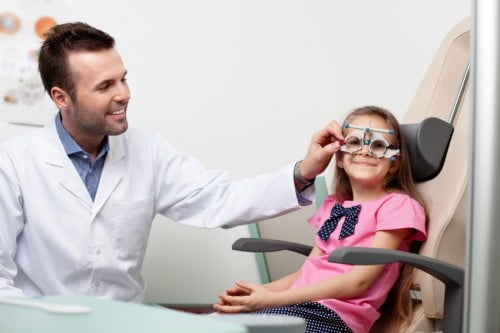Getting your children organized for the return to school is a taxing time filled with lists of things to do. Optos would like to remind you of the importance of vision in your child’s success at school and provide you with some information about children’s eye safety.
In order to reach their maximum potential in school, children need to have excellent vision. In fact, nearly 80 percent of what is taught to your child in school is done so visually, according to experts. Considering that fact, it is easy to understand why children who are at a disadvantage due to poor eyesight struggle with school and learning what they must to be successful.
Comprehensive Eye Exams
Although schools do some basic testing, they are not qualified to diagnose problems with your child’s eyesight. Scheduling your child for a comprehensive eye exam can not only ensure your child’s vision is appropriate or corrected, but also rule out diseases that can potentially lead to vision loss over time.
Avoid Digital Eye Strain
Children spend a lot of time in front of computers and other digital screens, which can lead to eye strain. Talk to your child about exercising their eye muscles frequently to relieve stress on the eye muscles. Also remind them to blink often while they are in front of such screens to keep their eyes from getting dry or irritated.
Sun Protection
Despite the return to school signifying the end of summer, the sun’s UV rays can still cause damage to your children’s eyes. A critical part of children’s eye safety is to ensure they have proper protection from the sun while participating in outdoor activities.
Optos would like to wish everyone a successful school year and reminds you to protect your children’s eye health with a comprehensive eye exam. Speak to your doctor about including optomap® as part of the exam since it is non-invasive for your child and takes only seconds to get a highly-detailed view of the retina, which is critical for early disease detection.
